Popular categories
Looking for a yarn?
Order DROPS Needles & Hooks
Clicking the ORDER button will redirect you to Wool Warehouse Direct Ltd website
The yarn cost is calculated from the pattern’s smallest size and the yarn’s cheapest product type. Looking for an even better price? You might find it on the DROPS Deals!
Stone Cables
Knitted jumper for men in DROPS Air. The piece is worked with raglan, cables and double neck. Sizes S - XXXL.
DROPS Design: Pattern no ai-372
Yarn group C or A + A
-------------------------------------------------------
SIZES:
S - M - L - XL - XXL - XXXL
MATERIALS:
DROPS AIR from Garnstudio (belongs to yarn group C)
400-450-500-550-600-650 g colour 03, pearl grey
NEEDLES:
DROPS CIRCULAR NEEDLE SIZE 5 MM: Length 40 cm and 80 cm.
DROPS CIRCULAR NEEDLE SIZE 4 MM: Length 40 cm and 80 cm.
DROPS DOUBLE POINTED NEEDLES SIZE 5 MM.
DROPS DOUBLE POINTED NEEDLES SIZE 4 MM.
DROPS CABLE NEEDLE – for cables.
The technique MAGIC LOOP can be used – you then only need circular needle of 80 cm in each size.
KNITTING TENSION:
17 stitches in width and 22 rows in height with stocking stitch = 10 x 10 cm.
NOTE: Needle size is only a guide. If you get too many stitches on 10 cm, change to a larger needle size. If you get too few stitches on 10 cm, change to a smaller needle size.
-------------------------------------------------------
Alternative Yarn – See how to change yarns here
Yarn Groups A to F – Use the same pattern and change the yarn here
Yarn usage using an alternative yarn – Use our yarn converter here
-------------------------------------------------------
Order DROPS Needles & Hooks
Clicking the ORDER button will redirect you to Wool Warehouse Direct Ltd website
The yarn cost is calculated from the pattern’s smallest size and the yarn’s cheapest product type. Looking for an even better price? You might find it on the DROPS Deals!
- English (UK/cm)
- Česky
- Dansk
- Deutsch
- Eesti keel
- English (US/in)
- Español
- Français
- Íslenska
- Italiano
- Magyar
- Nederlands
- Norsk
- Polski
- Português
- Suomi
- Svenska
- English (UK/cm), Bulgaria
- English (UK/cm), Croatia
- English (UK/cm), Greece
- English (UK/cm), Latvia
- English (UK/cm), Lithuania
- English (UK/cm), Romania
- English (UK/cm), Slovenia
- Česky, Slovakia
Pattern instructions
EXPLANATIONS FOR THE PATTERN:
-------------------------------------------------------
PATTERN:
See diagrams A.1 to A.7.
DECREASE/INCREASE TIP (evenly spaced):
To work out how to decrease/increase evenly, count the total number of stitches on needle (e.g. 224 stitches), and divide by number of decreases/increases to be made (e.g. 20) = 11.2. In this example, decrease by knitting together approx. each 10th and 11th stitch.
When increasing, make 1 yarn over after approx. each 11th stitch. On the next round work the yarn overs twisted to avoid holes.
RAGLAN:
Decrease to raglan on each side of the marker thread in each transition between body and sleeves as follows: Work until there are 3 stitches left before the marker thread, knit 2 together, knit 2 (marker thread sits between these 2 stitches), slip 1 stitch as if to knit, knit 1 and pass the slipped stitch over the knitted stitch (8 stitches decreased on each decrease-round).
NOTE! When you no longer have room for a complete cable towards the raglan-line, work those stitches in stocking stitch.
INCREASE TIP (for sleeves):
Increase 1 stitch on each side of the marker-stitch as follows: Work to the marker-stitch, make 1 yarn over, knit 1 (marker-stitch), 1 yarn over. On the next round knit the yarn overs twisted to avoid holes. Then work the new stitches into A.1.
KNITTING TIP:
When casting off for the armholes on the body and sleeves, adjust to do this on the same row in pattern A.x on body and sleeve (single cables). So that all the of these cables can be work on the same round in the diagram as you continue onwards.
-------------------------------------------------------
START THE PIECE HERE:
-------------------------------------------------------
JUMPER – SHORT OVERVIEW OF THE PIECE:
The body is worked in the round, bottom up as far as the armholes. The sleeves are worked in the round with double pointed needles/short circular needle, bottom up. The sleeves are placed on the same circular needle as the body, and the yoke is finished in the round. The double neck is worked to finish.
BODY:
Cast on 224-232-250-264-292-314 stitches with circular needle size 4 mm and DROPS Air.
Work rib in the round (knit 1, purl 1) for 5 cm.
Change to circular needle size 5 mm and knit 1 round where you decrease 20-20-22-24-24-26 stitches evenly spaced – read DECREASE/INCREASE TIP = 204-212-228-240-268-288 stitches.
Continue according to the diagrams as follows:
* Work A.1 over 20-24-32-38-30-40 stitches, A.2 over 11-11-11-11-22-22 stitches (= 1-1-1-1-2-2 repeats of 11 stitches), A.3 (= 9 stitches), A.4 (= 42 stitches), A.5 (= 9 stitches), A.6 over 11-11-11-11-22-22 stitches (= 1-1-1-1-2-2 repeats of 11 stitches) *, work from *-* a total of 2 times.
Insert a marker in the middle of both sections of A.1 (10-12-16-19-15-20 stitches of A.1 on each side).
REMEMBER THE KNITTING TENSION!
Continue the pattern until the piece measures 35-35-36-36-36-36 cm from the cast-on edge – read KNITTING TIP!
On the next round cast off 3-3-4-4-5-5 stitches for the armholes on each side of both markers (6-6-8-8-10-10 stitches for each armhole). There are 96-100-106-112-124-134 stitches on the front piece and back pieces. Lay the piece to one side and work the sleeves.
SLEEVES:
Cast on 48-48-50-50-52-54 stitches with double pointed needles size 4 mm and DROPS Air. Work rib in the round (knit 1, purl 1) for 5 cm. Change to double pointed needles size 5 mm and knit 1 round where you increase 6-6-6-8-8-8 stitches evenly spaced - remember DECREASE/INCREASE TIP = 54-54-56-58-60-62 stitches.
Insert 1 marker in the first stitch on the round; used when increasing under the sleeve.
Continue according to the diagrams as follows:
Work A.1 over 9-9-10-11-12-13 stitches, A.3 (= 9 stitches), A.7 (= 18 stitches), A.5 (= 9 stitches) and A.1 over the last 9-9-10-11-12-13 stitches.
When the sleeve measures 8 cm from the cast-on edge increase 1 stitch on each side of the marker-stitch – read INCREASE TIP in explanations above.
Repeat this increase every 6½-4½-3-3-2½-2 cm a total of 6-8-11-11-13-15 times = 66-70-78-80-86-92 stitches.
Continue working until the sleeve measures 44-43-42-41-40-38 cm from the cast-on edge (shorter measurements in larger sizes due to wider neck and longer yoke). There is approx. 25-27-28-30-32-34 cm left before the neck; try the jumper on and work to desired length - remember KNITTING TIP!
Cast off 6-6-8-8-10-10 stitches mid-under the sleeve = 60-64-70-72-76-82 stitches.
Lay the piece to one side and work the other sleeve in the same way but insert the marker under the sleeve in the last stitch on the round.
YOKE:
Place the sleeves on the same needle as the body, where stitches were cast off for the armholes = 312-328-352-368-400-432 stitches.
Insert 1 marker thread in each transition between body and sleeves (= 4 marker threads). The 2 stitches on each side of all the marker threads are worked in stocking stitch; the other stitches are worked as before. Continue the pattern for 4-4-2-4-2-1 cm. Now continue the pattern and begin to decrease for RAGLAN – read description above.
Decrease like this every 2nd round a total of 22-24-27-28-32-35 times. When all the decreases are finished there are 136-136-136-144-144-152 stitches and the yoke measures approx. 24-26-27-29-31-33 cm from where the body and sleeves were joined.
On the next round continue the pattern but knit the cable-stitches and decrease stitches evenly as follows: Decrease a total of 6 stitches over the cables on the front piece and 3 stitches over the first sleeve, 6 stitches over the cables on the back piece and 3 stitches over the cables on the other sleeve = 118-118-118-126-126-134 stitches.
Knit 1 round and decrease 36-32-30-38-34-38 stitches evenly on the round = 82-86-88-88-92-96 stitches.
The jumper measures approx. 64-66-68-70-72-74 cm from the shoulder.
DOUBLE NECK:
Change to short circular needle size 4 mm and work rib (knit 1, purl 1) for 12 cm. On the next round increase stitches to avoid the neck being tight when folded double as follows: Make 1 yarn over after every second purled stitch = 102-107-110-110-115-120 stitches. Purl the yarn overs twisted on the next round to avoid holes. Continue with knit over knit and purl over purl until the neck measures 14 cm. Loosely cast off with knit over knit and purl over purl.
ASSEMBLY:
Sew together the openings under the sleeves. Fold the neck double to the inside and sew down. To avoid the neck being tight and rolling outwards, it is important that the seam is elastic
This pattern has been corrected. Click here to see the correction/s.
Correction diagrams A.3 and A.5.
Diagram

|
= knit |

|
= purl |

|
= place 3 stitches on cable needle behind the piece, knit 3 and knit 3 from cable needle |

|
= place 1 stitch on cable needle behind the piece, knit 3 and purl 1 from cable needle |

|
= place 3 stitches on cable needle in front of piece, purl 1 and knit 3 from cable needle |
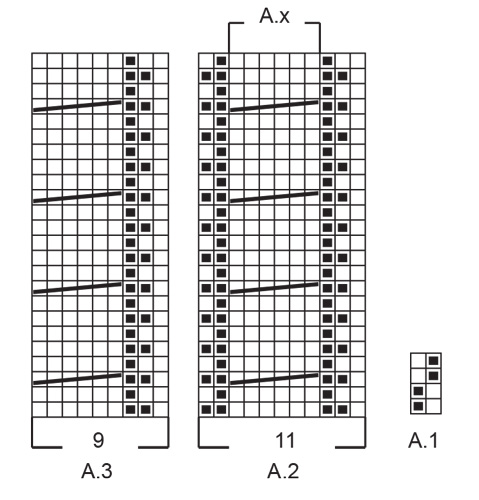


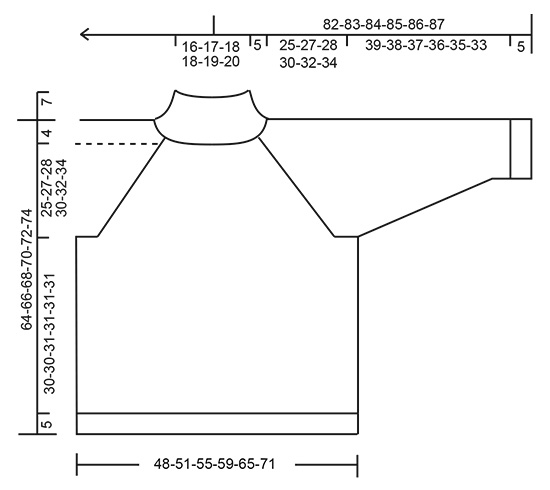
What can you do with our patterns? You can share DROPS patterns online, using the pattern original picture, materials, name and number. But you are NOT ALLOWED to reproduce the complete pattern digitally in any way. Yarn stores are welcome to use the DROPS pattern database to promote the sale of our assortment. You can print out our patterns, make as many copies as you’d like. The only thing we ask is that you don't make any changes / additions to the original printed document. And that the patterns according to the DROPS philosophy are given out to the consumers for free. Editorials that wish to publish our patterns in printed books or magazines can contact us for more information. The sale of garments based on DROPS patterns is permitted as long as they are sold as single items or per order. Further commercial use of the patterns is not permitted. It has to be clearly stated that the garment is made based on a design from DROPS DESIGN. The use of clothing labels of which DROPS DESIGN forms part is conditioned by the inclusion of the following text: “A DROPS DESIGN made by …..”. The use of DROPS photos for marketing purposes/sales is only permitted in connection with the use/sale of DROPS products. The photos may not be cut or edited and the logo should be clearly visible.
We reserve the right to withdraw the permission for use of our patterns at any time, notwithstanding the reason.
Each of our patterns has specific tutorial videos to help you.
These step-by-step tutorials might also help you:
Why is the knitting/crochet tension so important?
Knitting tension is what determines the final measurements of your work, and is usually measured per 10 x 10 cm. It is provided like so: number of stitches in width x number of rows in height - eg: 19 stitches x 26 rows = 10 x 10 cm.
The knitting tension is very individual; some people knit/crochet loosely while others work tightly. You adjust the knitting tension with the needle size, which is why the suggested needle size is only meant as a guide! You need to adjust this (up or down) to ensure that YOUR knitting tension matches the knitting tension provided in the pattern. If you work with a different knitting tension than provided you will have a different yarn consumption, and your work will have different measurements than what the pattern suggests.
The knitting tension also determines which yarns can replace each other. As long as you achieve the same knitting tension you can replace one yarn with another.
See DROPS lesson: How to measure your tension/gauge
See DROPS video: How to make a gauge tension swatch
How do I know how many balls of yarn I need?
The required amount of yarn is provided in grams, eg: 450 g. To calculate how many balls you’ll need you first need to know how many grams are in 1 ball (25g, 50g or 100g). This information is available if you click on the individual yarn quality on our pages. Divide the amount required with the amount of each ball. For example, if each ball is 50g (the most common amount), the calculation will be as follows: 450 / 50 = 9 balls.
Can I use a different yarn than what the pattern suggests?
The important thing when changing from one yarn to another is that the knitting/crochet tension remains the same. This is so that the measurements of the finished piece will be the same as on the sketch provided. It is easier to achieve the same knitting tension using yarns from the same yarn group. It is also possible to work with multiple strands of a thinner yarn to achieve the knitting tension of a thicker one. Please try our yarn converter. We recommend you to always work a test swatch.
Please NOTE: when changing yarn the garment might have a different look and feel to the garment in the photo, due to individual properties and qualities of each yarn.
See DROPS lesson: Can I use a different yarn than the one mentioned in the pattern?
What are the yarn groups?
All our yarns are categorised into yarn groups (from A to F) according to thickness and knitting tension – group A contains the thinnest yarns and group F the thickest. This makes it easier for you to find alternative yarns to our patterns, should you wish to switch yarn. All yarns within the same group have a similar knitting tension and can easily replace each other. However, different yarn qualities have different structures and properties which will give the finished work a unique look and feel.
How do I use the yarn calculator?
At the top of all our patterns you’ll find a link to our yarn calculator, which is a helpful tool should you wish to use a different yarn than suggested. By filling in the yarn quality you wish to replace, the amount (in your size) and number of strands, the calculator will present good alternative yarns with the same knitting tension. Additionally it will tell you how much you’ll require in the new qualities and whether you’ll need to work with multiple strands. Most skeins are 50g (some are 25g or 100g).
If the pattern is worked with multiple colours, every colour will have to be calculated separately. Similarly, if the pattern is worked with several strands of different yarns (for example 1 strand Alpaca and 1 strand Kid-Silk) you will have to find alternatives for each, individually.
Why do you show discontinued yarns in the patterns?
Since different yarns have different qualities and textures we have chosen to keep the original yarn in our patterns. However, you can easily find options among our available qualities by using our yarn calculator, or simply pick a yarn from the same yarn group.
It is possible that some retailers still have discontinued yarns in stock, or that someone has a few skeins at home that they would like to find patterns for.
The yarn calculator will provide both alternative yarn as well as required amount in the new quality.
What size should I knit?
If you think it's hard to decide what size to make, it can be a good idea to measure a garment you own already and like the size of. Then you can pick the size by comparing those measures with the ones available in the pattern's size chart.
You'll find the size chart at the bottom of the pattern.
See DROPS lesson: How to read size chart
Why do I get the wrong knitting tension with the suggested needle size?
The needle size provided in the pattern serves only as a guide, the important thing is to follow the knitting tension. And since knitting tension is very individual, you will have to adjust the needle size to ensure that YOUR tension is the same as in the pattern – maybe you’ll have to adjust 1, or even 2 needle sizes, up or down to achieve the correct tension. For this, we recommend that you work test swatches.
Should you work with a different knitting tension than the one provided, the measurements of the finished garment might deviate from the measurement sketch.
See DROPS lesson: How to measure your tension/gauge
See DROPS video: How to make a tension/gauge swatch
Why is the pattern worked top-down?
Working a garment top-down provides more flexibility and room for personal adjustment. For example it is easier to try the garment on while working, as well as making adjustments to length of yoke and shoulder caps.
The instructions are carefully explaining every step, in the correct order. Diagrams are adjusted to the knitting direction and are worked as usual.
How do I work according to a knitting diagram?
The diagram depicts all rows/rounds, and every stitch seen from the right side. It is read from bottom to top, from right to left. 1 square = 1 stitch.
When working back and forth, every other row is worked from the right side and every other row is worked from the wrong side. When working from the wrong side, the diagram will have to be worked reversed: from left to right, knit stitches are purled, purl stitches are knit etc.
When working in the round every round is worked from the right side and the diagram are worked from right to left on all rounds.
See DROPS lesson: How to read knitting diagrams
How do I work according to a crochet diagram?
The diagram depicts all rows/rounds, and every stitch seen from the right side. It is worked from bottom to top, from right to left.
When working back and forth every other row is worked from the right side: from right to left and every other row is worked from the wrong side: from left to right.
When working in the round, every row in the diagram are worked from the right side, from right to left.
When working a circular diagram you start in the middle and work your way outwards, counter clockwise, row by row.
The rows usually start with a given number of chain stitches (equivalent to the height of the following stitch), this will either be depicted in the diagram or explained in the pattern.
See DROPS lesson: How to read crochet diagrams
How do I work several diagrams simultaneously on the same row/round?
Instructions for working several diagrams after each other on the same row/round, will often be written like so: “work A.1, A.2, A.3 a total of 0-0-2-3-4 times". This means you work A.1 once, then A.2 is worked once, and A.3 is repeated (in width) the number of times provided for your size – in this case like so: S = 0 times, M = 0 times, L=2 times, XL= 3 times and XXL = 4 times.
The diagrams are worked as usual: begin with the first row in A.1, then work the first row in A.2 etc.
See DROPS lesson: How to read knitting diagrams
See DROPS lesson: How to read crochet diagrams
Why are the sleeves shorter in larger sizes?
The total width of the garment (from wrist-to-wrist) will be larger in the larger sizes, despite the actual sleeves being shorter. The larger sizes have longer sleeve caps and wider shoulders, so there will be a good fit in all sizes.
Where on the garment is the length measured?
The measurement sketch/schematic drawing provides information regarding the full length of the garment. If it’s a jumper or a jacket the length is measured from the highest point on the shoulder closest to the neckline, and straight down to the bottom of the garment. It is NOT measured from the tip of shoulder. Similarly, the length of yoke is measured from the highest point on the shoulder and down to where yoke is split into body and sleeves.
On a jacket measures are never taken along bands, unless specifically stated. Always measure inside band stitches when measuring the length.
See DROPS lesson: How to read a schematic drawing
What is a repeat?
Diagrams are often repeated on the round or in height. 1 repeat is the diagram the way it appears in the pattern. If it says to work 5 repeats of A.1 in the round, then you work A.1 a total of 5 times after/next to each other in the round. If it says to work 2 repeats of A.1 vertically/in height you work the entire diagram once, then begin again at the start and work the entire diagram one more time.
Why does the piece start with more chain stitches than it’s worked with?
Chain stitches are slightly narrower than other stitches and to avoid working the cast-on edge too tight, we simply chain more stitches to begin with. The stitch count will be adjusted on the following row to fit the pattern and measurement sketch.
Why increase before the rib edge when the piece is worked top-down?
The rib edge is more elastic and will contract slightly compared to, for example, stocking stitch. By increasing before the rib edge, you avoid a visible difference in width between the rib edge and the rest of the body.
Why increase in the cast-off edge?
It’s very easy to cast off too tightly, and by making yarn overs while casting off (and simultaneously casting these off) you avoid a too tight cast off edge.
See DROPS video: How to bind off with yarn overs (yo)
How do I increase/decrease on every 3rd and 4th row/round alternately?
To achieve an even increase (or decrease) you can increase on, for example: every 3rd and 4th row alternately, like so: work 2 rows and increase on the 3rd row, work 3 rows and increase on the 4th. Repeat this until the increase is complete.
See DROPS lesson: Increase or decrease 1 st on every 3rd and 4th row alternately
How can I work a jacket in the round instead of back and forth?
Should you prefer to work in the round instead of back and forth, you may of course adjust the pattern. You’ll need to add steeks mid-front (usually 5 stitches), and follow the instructions. When you would normally turn and work from the wrong side, simply work across the steek and continue in the round. At the end you’ll cut the piece open, pick up stitches to work bands, and cover the cut edges.
See DROPS video: How to knit steeks and cut open
Can I work a jumper back and forth instead of in the round?
Should you prefer to work back and forth instead of in the round, you may of course adjust the pattern so you work the pieces separately and then assemble them at the end. Divide the stitches for the body in 2, add 1 edge stitch in each side (for sewing) and work the front and back pieces separately.
See DROPS lesson: Can I adapt a pattern for circular needles into straight needles?
Why is the pattern slightly different than what I see in the photo?
Pattern repeats can vary slightly in the different sizes, in order to get the correct proportions. If you’re not working the exact same size as the garment in the photo, yours might deviate slightly. This has been carefully developed and adjusted so that the complete impression of the garment is the same in all sizes.
Make sure to follow instructions and diagrams for your size!
How do I make a women’s size garment into a men’s size one?
If you have found a pattern you like which is available in women’s size it’s not very difficult to convert it to men’s size. The biggest difference will be the length of sleeves and body. Start working on the women size that you think would fit across the chest. The additional length will be worked right before you cast off for the armhole/sleeve cap. If the pattern is worked top-down you can add the length right after the armhole or before the first decrease on sleeve.
Regarding additional yarn amount, this will depend on how much length you add, but it is better with a skein too many than too few.
How do I prevent a hairy garment from shedding?
All yarns will have excess fibres (from production) that might come off as lint or shedding. Brushed yarns (ie hairier yarns) have more of these loose, excess fibres, causing more shedding.
Shedding also depends on what is worn under or over the garment, and whether this pulls at the yarn fibres. It’s therefore not possible to guarantee that there will be no shedding
Below are some tips on how to get the best result when working with hairier yarns:
1. When the garment is finished (before you wash it) shake it vigorously so the looser hairs come off. NOTE: do NOT use a lint roller, brush or any method that pulls at the yarn.
2. Place the garment in a plastic bag and put it in your freezer - the temperature will cause the fibres to become less attached to each other, and excess fibres will come off easier.
3. Leave in the freezer for a few hours before taking it out and shaking it again.
4. Wash the garment according to the instructions on the yarn label.
Why does my garment pill?
Pilling is a natural process that happens to even the most exclusive of fibers. It's a natural sign of wear and tear that is hard to avoid, and that is most visible in high friction areas of your garment like a sweater's arms and cuffs.
You can make your garment look as new by removing the pilling, using a fabric comb or a pill/lint remover.
In the meantime, you can read the questions and answers that others have left to this pattern or join the DROPS Workshop on Facebook to get help from fellow knitters/crocheters!
You might also like...
Stone Cables
Stone Cables
Stone Cables
Stone Cables
Stone Cables |
||||||||||||||||
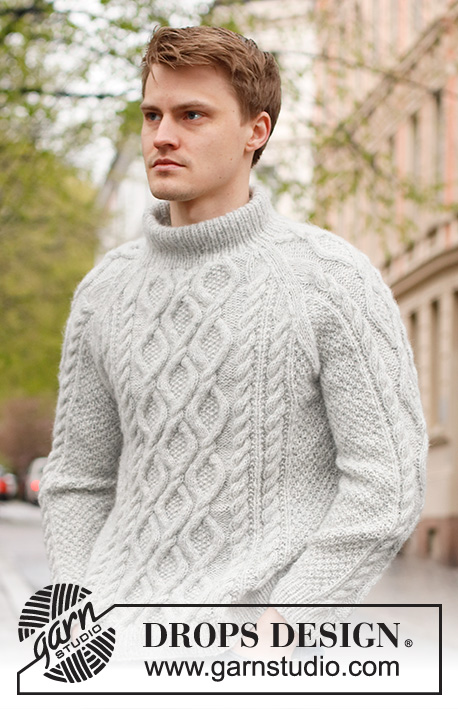 |
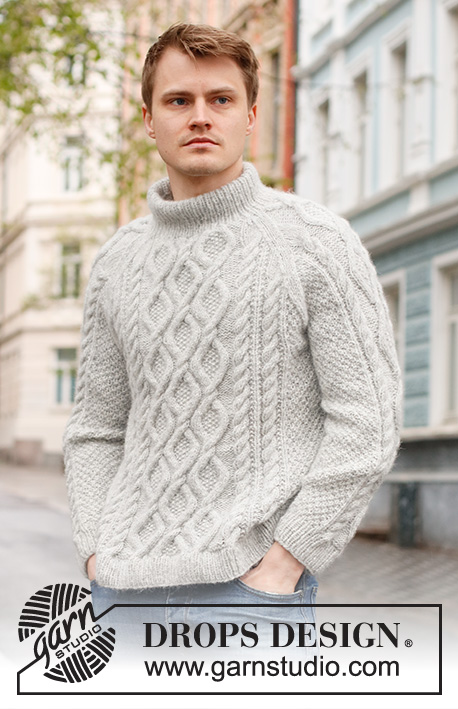 |
|||||||||||||||
Knitted jumper for men in DROPS Air. The piece is worked with raglan, cables and double neck. Sizes S - XXXL.
DROPS 224-4 |
||||||||||||||||
|
------------------------------------------------------- EXPLANATIONS FOR THE PATTERN: ------------------------------------------------------- PATTERN: See diagrams A.1 to A.7. DECREASE/INCREASE TIP (evenly spaced): To work out how to decrease/increase evenly, count the total number of stitches on needle (e.g. 224 stitches), and divide by number of decreases/increases to be made (e.g. 20) = 11.2. In this example, decrease by knitting together approx. each 10th and 11th stitch. When increasing, make 1 yarn over after approx. each 11th stitch. On the next round work the yarn overs twisted to avoid holes. RAGLAN: Decrease to raglan on each side of the marker thread in each transition between body and sleeves as follows: Work until there are 3 stitches left before the marker thread, knit 2 together, knit 2 (marker thread sits between these 2 stitches), slip 1 stitch as if to knit, knit 1 and pass the slipped stitch over the knitted stitch (8 stitches decreased on each decrease-round). NOTE! When you no longer have room for a complete cable towards the raglan-line, work those stitches in stocking stitch. INCREASE TIP (for sleeves): Increase 1 stitch on each side of the marker-stitch as follows: Work to the marker-stitch, make 1 yarn over, knit 1 (marker-stitch), 1 yarn over. On the next round knit the yarn overs twisted to avoid holes. Then work the new stitches into A.1. KNITTING TIP: When casting off for the armholes on the body and sleeves, adjust to do this on the same row in pattern A.x on body and sleeve (single cables). So that all the of these cables can be work on the same round in the diagram as you continue onwards. ------------------------------------------------------- START THE PIECE HERE: ------------------------------------------------------- JUMPER – SHORT OVERVIEW OF THE PIECE: The body is worked in the round, bottom up as far as the armholes. The sleeves are worked in the round with double pointed needles/short circular needle, bottom up. The sleeves are placed on the same circular needle as the body, and the yoke is finished in the round. The double neck is worked to finish. BODY: Cast on 224-232-250-264-292-314 stitches with circular needle size 4 mm and DROPS Air. Work rib in the round (knit 1, purl 1) for 5 cm. Change to circular needle size 5 mm and knit 1 round where you decrease 20-20-22-24-24-26 stitches evenly spaced – read DECREASE/INCREASE TIP = 204-212-228-240-268-288 stitches. Continue according to the diagrams as follows: * Work A.1 over 20-24-32-38-30-40 stitches, A.2 over 11-11-11-11-22-22 stitches (= 1-1-1-1-2-2 repeats of 11 stitches), A.3 (= 9 stitches), A.4 (= 42 stitches), A.5 (= 9 stitches), A.6 over 11-11-11-11-22-22 stitches (= 1-1-1-1-2-2 repeats of 11 stitches) *, work from *-* a total of 2 times. Insert a marker in the middle of both sections of A.1 (10-12-16-19-15-20 stitches of A.1 on each side). REMEMBER THE KNITTING TENSION! Continue the pattern until the piece measures 35-35-36-36-36-36 cm from the cast-on edge – read KNITTING TIP! On the next round cast off 3-3-4-4-5-5 stitches for the armholes on each side of both markers (6-6-8-8-10-10 stitches for each armhole). There are 96-100-106-112-124-134 stitches on the front piece and back pieces. Lay the piece to one side and work the sleeves. SLEEVES: Cast on 48-48-50-50-52-54 stitches with double pointed needles size 4 mm and DROPS Air. Work rib in the round (knit 1, purl 1) for 5 cm. Change to double pointed needles size 5 mm and knit 1 round where you increase 6-6-6-8-8-8 stitches evenly spaced - remember DECREASE/INCREASE TIP = 54-54-56-58-60-62 stitches. Insert 1 marker in the first stitch on the round; used when increasing under the sleeve. Continue according to the diagrams as follows: Work A.1 over 9-9-10-11-12-13 stitches, A.3 (= 9 stitches), A.7 (= 18 stitches), A.5 (= 9 stitches) and A.1 over the last 9-9-10-11-12-13 stitches. When the sleeve measures 8 cm from the cast-on edge increase 1 stitch on each side of the marker-stitch – read INCREASE TIP in explanations above. Repeat this increase every 6½-4½-3-3-2½-2 cm a total of 6-8-11-11-13-15 times = 66-70-78-80-86-92 stitches. Continue working until the sleeve measures 44-43-42-41-40-38 cm from the cast-on edge (shorter measurements in larger sizes due to wider neck and longer yoke). There is approx. 25-27-28-30-32-34 cm left before the neck; try the jumper on and work to desired length - remember KNITTING TIP! Cast off 6-6-8-8-10-10 stitches mid-under the sleeve = 60-64-70-72-76-82 stitches. Lay the piece to one side and work the other sleeve in the same way but insert the marker under the sleeve in the last stitch on the round. YOKE: Place the sleeves on the same needle as the body, where stitches were cast off for the armholes = 312-328-352-368-400-432 stitches. Insert 1 marker thread in each transition between body and sleeves (= 4 marker threads). The 2 stitches on each side of all the marker threads are worked in stocking stitch; the other stitches are worked as before. Continue the pattern for 4-4-2-4-2-1 cm. Now continue the pattern and begin to decrease for RAGLAN – read description above. Decrease like this every 2nd round a total of 22-24-27-28-32-35 times. When all the decreases are finished there are 136-136-136-144-144-152 stitches and the yoke measures approx. 24-26-27-29-31-33 cm from where the body and sleeves were joined. On the next round continue the pattern but knit the cable-stitches and decrease stitches evenly as follows: Decrease a total of 6 stitches over the cables on the front piece and 3 stitches over the first sleeve, 6 stitches over the cables on the back piece and 3 stitches over the cables on the other sleeve = 118-118-118-126-126-134 stitches. Knit 1 round and decrease 36-32-30-38-34-38 stitches evenly on the round = 82-86-88-88-92-96 stitches. The jumper measures approx. 64-66-68-70-72-74 cm from the shoulder. DOUBLE NECK: Change to short circular needle size 4 mm and work rib (knit 1, purl 1) for 12 cm. On the next round increase stitches to avoid the neck being tight when folded double as follows: Make 1 yarn over after every second purled stitch = 102-107-110-110-115-120 stitches. Purl the yarn overs twisted on the next round to avoid holes. Continue with knit over knit and purl over purl until the neck measures 14 cm. Loosely cast off with knit over knit and purl over purl. ASSEMBLY: Sew together the openings under the sleeves. Fold the neck double to the inside and sew down. To avoid the neck being tight and rolling outwards, it is important that the seam is elastic |
||||||||||||||||
Diagram explanations |
||||||||||||||||
|
||||||||||||||||

|
||||||||||||||||

|
||||||||||||||||

|
||||||||||||||||

|
||||||||||||||||
|
Have you made this or any other of our designs? Tag your pictures in social media with #dropsdesign so we can see them! Do you need help with this pattern?You'll find tutorial videos, a Comments/Questions area and more by visiting the pattern on garnstudio.com. © 1982-2024 DROPS Design A/S. We reserve all rights. This document, including all its sub-sections, has copyrights. Read more about what you can do with our patterns at the bottom of each pattern on our site. |
||||||||||||||||
With over 40 years in knitting and crochet design, DROPS Design offers one of the most extensive collections of free patterns on the internet - translated to 17 languages. As of today we count 304 catalogues and 11422 patterns - 11422 of which are translated into English (UK/cm).
We work hard to bring you the best knitting and crochet have to offer, inspiration and advice as well as great quality yarns at incredible prices! Would you like to use our patterns for other than personal use? You can read what you are allowed to do in the Copyright text at the bottom of all our patterns. Happy crafting!

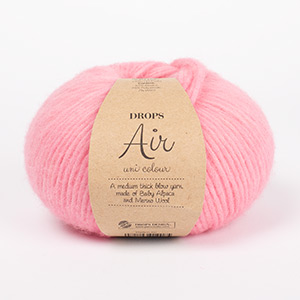






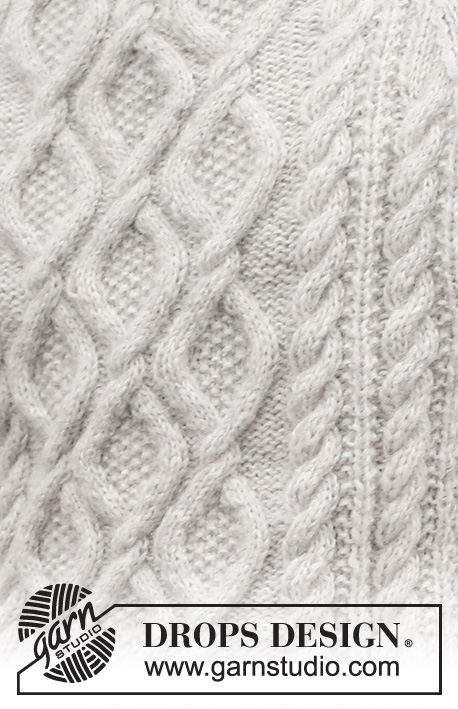
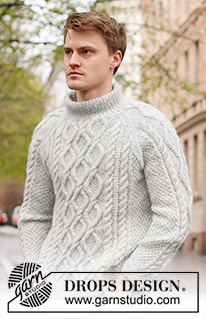
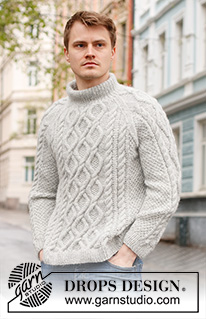
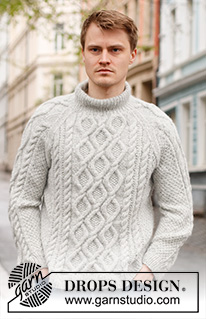

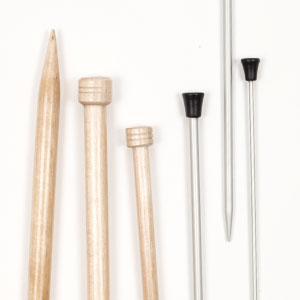
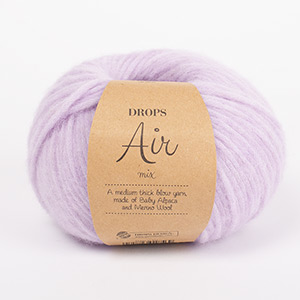


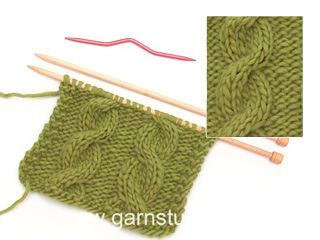
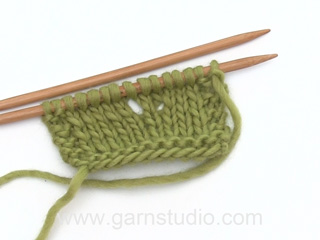

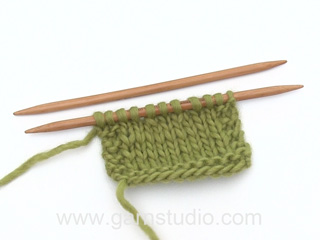
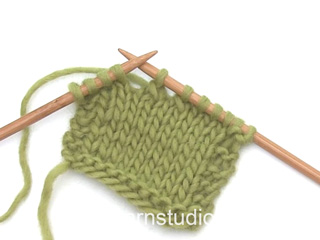

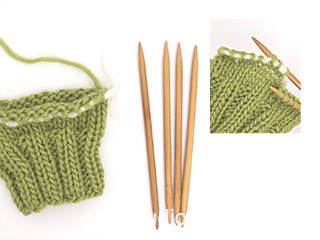
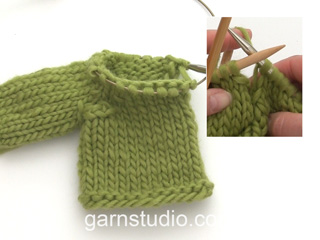
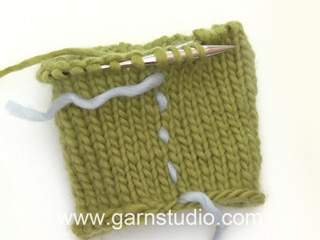
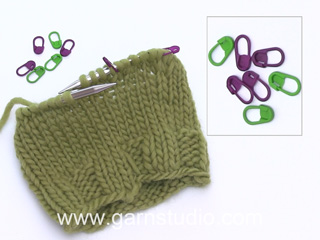
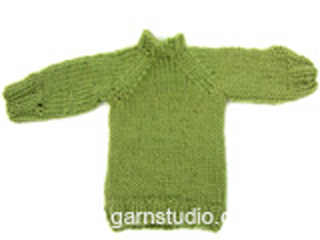
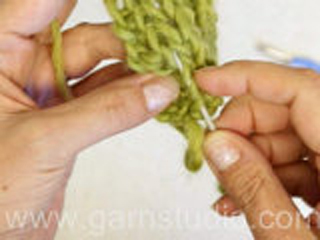
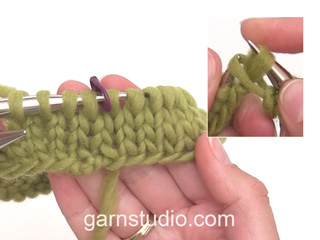

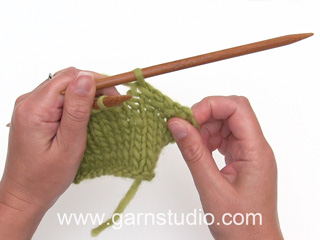

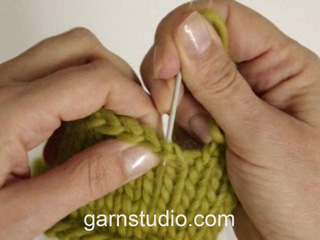
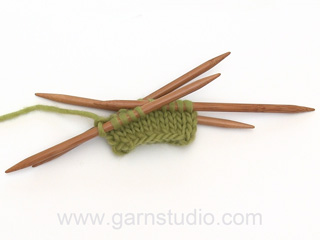

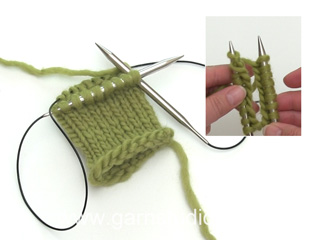
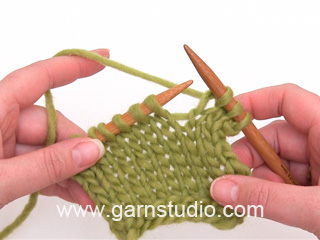
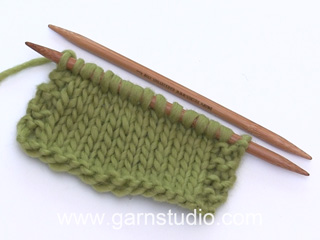
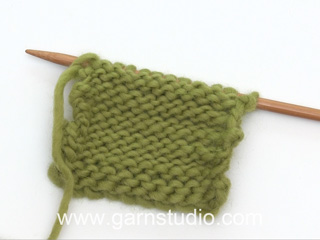
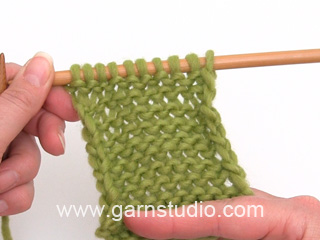
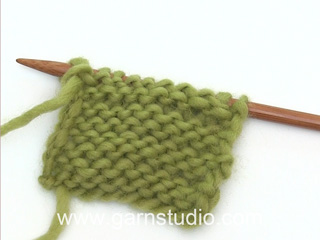
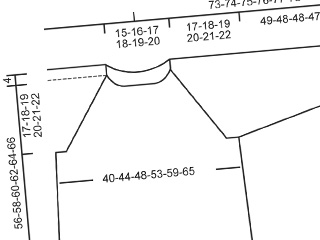
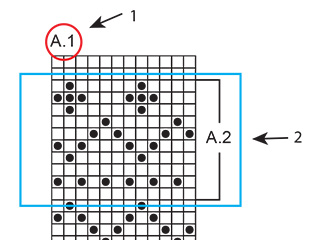
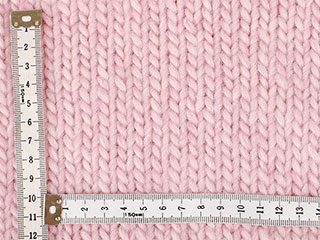
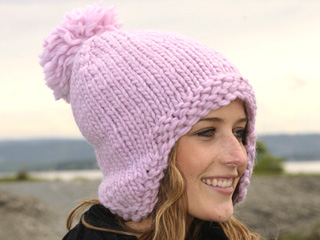
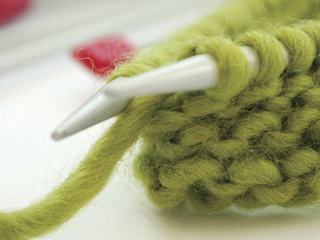
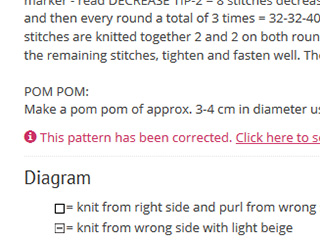
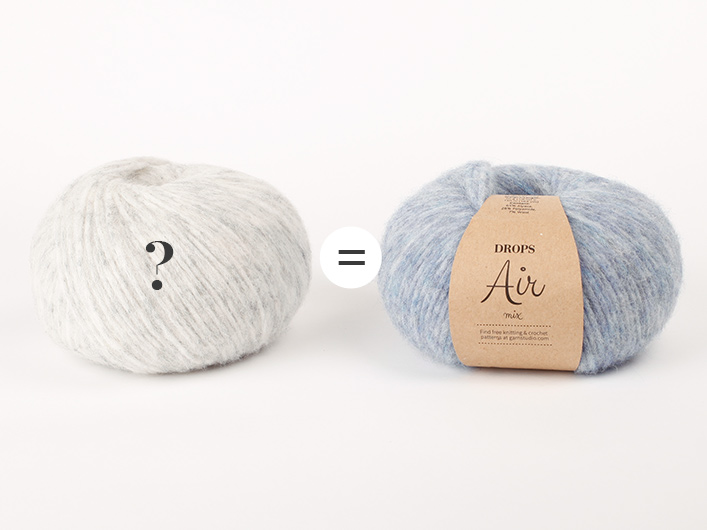

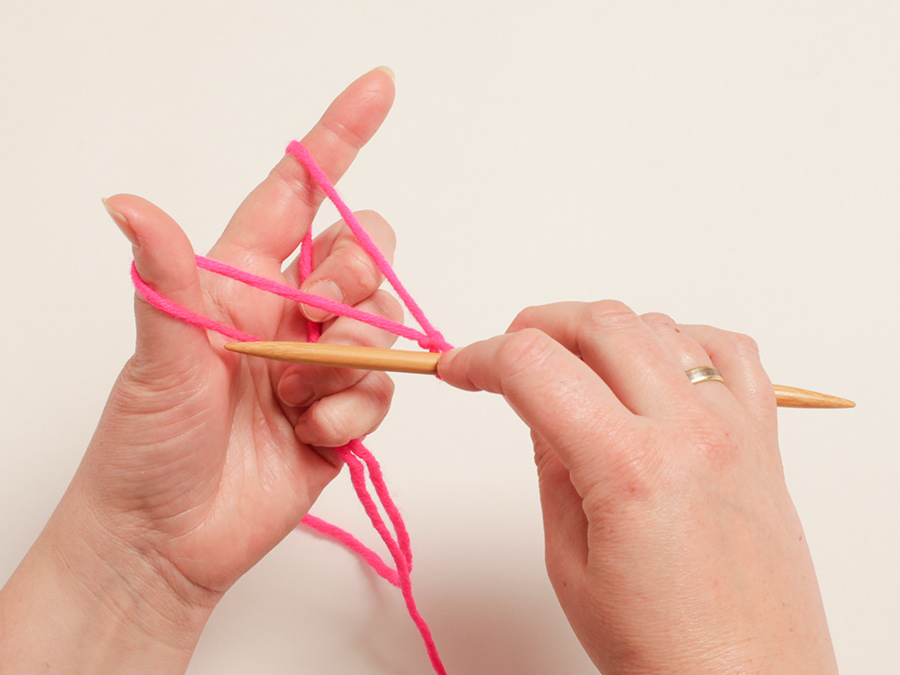
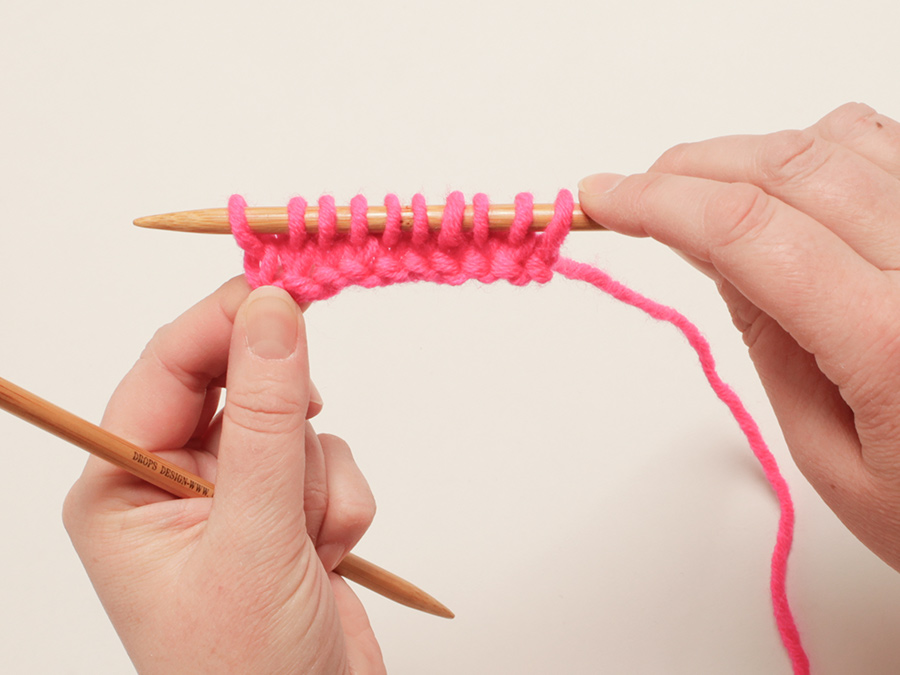

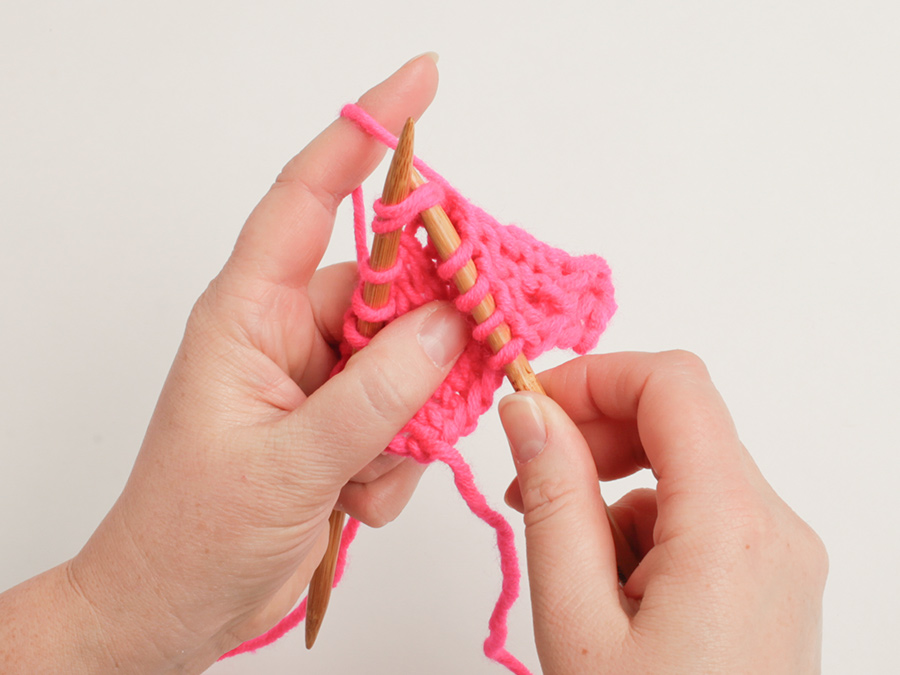
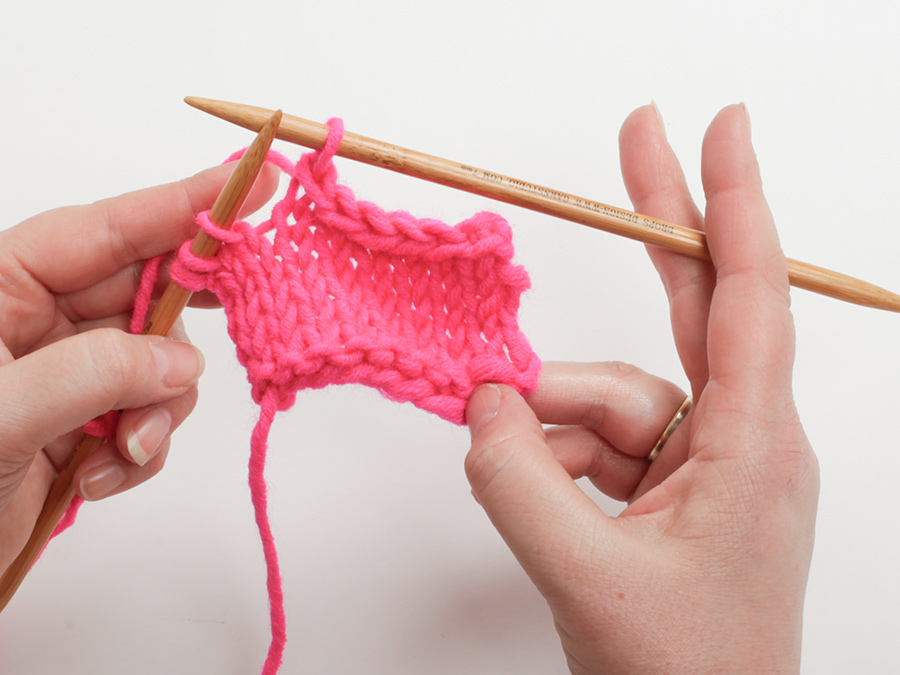
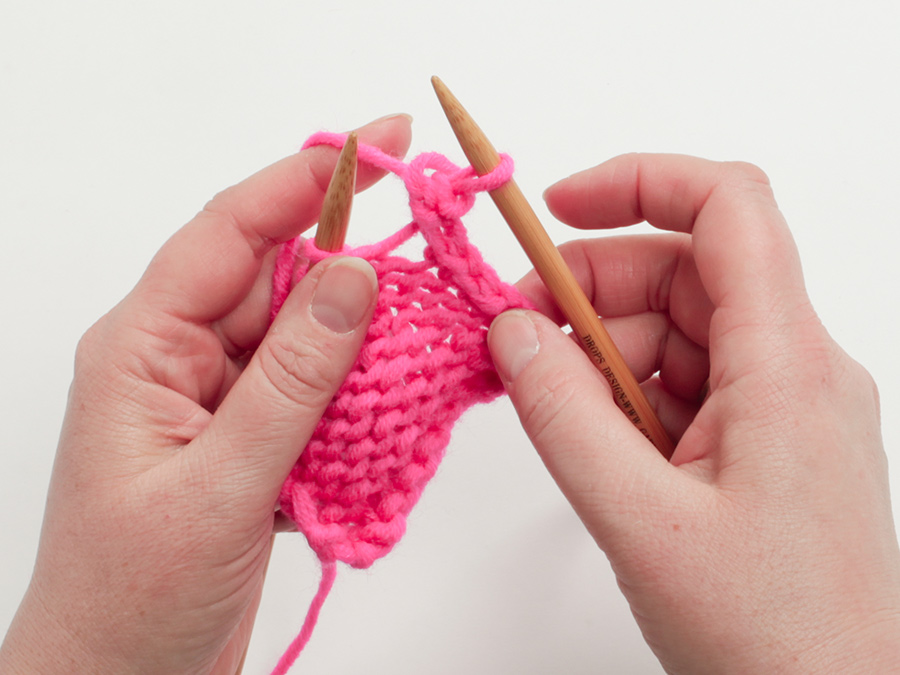

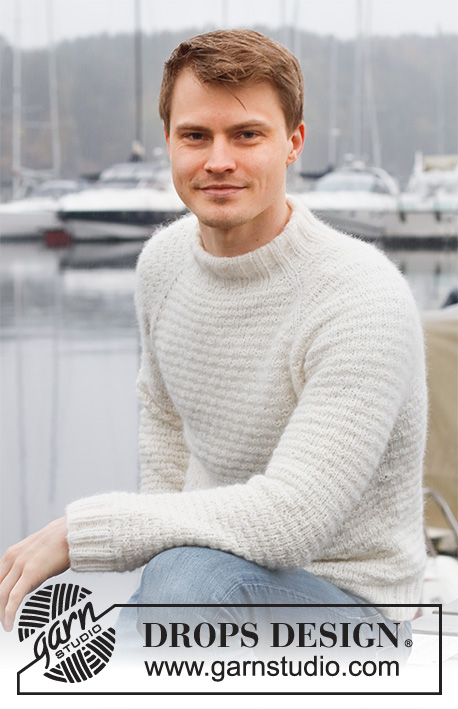
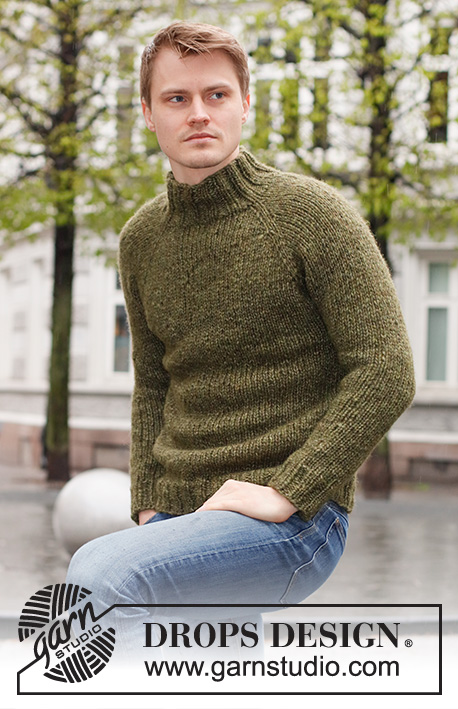

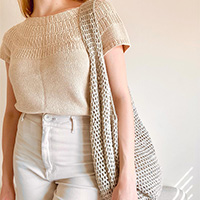


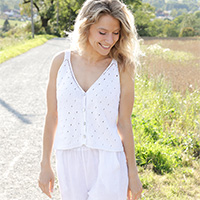
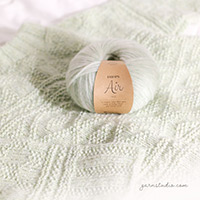
Comments / Questions (38)
Wonderful pattern! I used Baby Merino together with Alpaca and it turned out beautifully. It turned out slimmer at first because Baby Merino is quite stretchy but after blocking it had the right size. I still reccomend making sleeves and body 2 cm longer. It's an easy to follow pattern when you have some experience in bottom up knitting. Thank you for this great pattern!
25.03.2024 - 19:07Die Anleitung ist immer noch total falsch. Sie stellen schicke Pullover kostenlos ins Netz. Ich kaufe die Wolle und die Anleitung ist total falsch. Das geht nicht. Wann können mit einer korrekten Anleitung rechnen?
19.01.2024 - 16:27Bonjour, dans le modele 224-4 Au niveau apres le raglan c´est indique diminuer a interval regulier 6 mailles dans les torsades du devant +3 mailles dans celle de la premiere manche +6 m celles du dos et 3 mailles dans l´autre manche Comment proceder je ne comprends pas trop Merci beaucoup
16.01.2024 - 15:35DROPS Design answered:
Bonjour Mme Oudinet, comme il faut plus de mailles pour tricoter une torsade que pour du jersey, on doit diminuer le nombre de mailles des diagrammes: tricotez 6 fois 2 m ens à l'endroit (= 6 diminutions) dans les torsades du devant et du dos, et tricotez 3 fois 2 m ens à l'endroit dans les torsades de chacune des manches. Au tour suivant, répartissez encore le nombre de diminutions indiqué pour votre taille puis tricotez le col. Bon tricot!
17.01.2024 - 08:53Liebes Team, ihr müsst unbedingt die Diagramme des Modells DROPS Design: Modell ai-372 überarbeiten. Es soll schon eine Korrektur erfolgt sein aber die erschließt sich mir absolut nicht! Liebe Grüße
05.01.2024 - 20:18Ik kom bij het breien van mijn proeflapje tot de constatatie dat ik naalddikte 6 zal moeten gebruiken voor dit werk (behalve voor de boorden natuurlijk). Drops air is echter niet geschikt voor deze dikte naalden en heeft ook wat teveel "doorkijk" met naalddikte 6. Kan ik dan twee draden Drops air gebruiken voor dit werk? Of gaan de maten dan niet meer kloppen...?
18.12.2023 - 19:30DROPS Design answered:
Dag Ives,
Dan zou je met 2 draden opnieuw een proeflapje moeten maken om te kijken of je de stekenverhouding haalt (waarschijnlijk met dunnere naalden). DROPS Air is van zichzelf wat dun en heeft iets meer 'doorkijk' dan ander garen, maar ik denk dat dat mee zal vallen in dit patroon met kabels.
10.01.2024 - 10:07Ik lees dat er een correctie doorgevoerd is voor tel patroon A3 en A5 maar kan hierover verder niets vinden. Is het patroon hier afgebeeld dan toch reeds het gecorrigeerde?
16.10.2023 - 11:25DROPS Design answered:
Dag Marianne,
Ja, het online patroon is de gecorrigeerde versie. Mocht je een afdruk hebben van voor de correctiedatum, dan is de correctie nog niet in de afdruk doorgevoerd.
18.10.2023 - 19:00Takk for svar, men det er akkurat det jeg mener: noen har kort, andre lang rygg. Akkurat som at noen har kort overkropp og lang underkropp, og omvendt. Jeg forstår fortsatt ikke at alle er like lange fra ermehull og ned til f.eks. hoftehøyde?
09.10.2023 - 14:52Hei! Ang. Stone Cables, Drops 224-4. Kan det være riktig at det skal strikkes like langt før felling til ermehull for størrelsene L-XXXL? Jeg har strikket genseren i str. L, og den ble altfor kort . Jeg hadde dessverre ingen mulighet til å måle den jeg strikket til, men stolte på oppskriften.
30.09.2023 - 11:27DROPS Design answered:
Hei Tordis. Jo, oppskriften stemmer. Folk er forskjellige, noen har kort rygg, mens andre lang. For at et plagg skal passe best mulig er det en god ide å ta mål av en genser som passer den som skal ha genseren, og sammenlign med målene i målskissen for å finne beste passform. mvh DROPS Design
09.10.2023 - 14:12Bonjour Y a t'il vraiment un intérêt à tricoter ce pull en un seul morceau Cordialement
20.04.2023 - 11:36DROPS Design answered:
Bonjour Mme Després, c'est ainsi que la styliste l'a créé; l'intérêt est de limiter les coutures (on a ici une seule couture sous chacune des manches). Dans cette vidéo, nous montrons comment tricoter un pull raglan de bas en haut; et dans cette leçon, nous traitons des aiguilles circulaires. Bon tricot!
20.04.2023 - 13:26Hei. Prøver å strikke denne genser. Størrelse xl passer etter målene angitt i skissen. Men når jeg var ferdig med vrangbordet kom jeg på 150cm i omkrets selv om strikkefastheten stemmer med 17/10. Hva gjør jeg feil?
18.04.2023 - 23:22DROPS Design answered:
Hej Kirsten,da strikker du vrangborden for løst, prøv med en mindre pind. Det glatstrikkede skal være 17 m på 10 cm men ikke vrangborden, den er elastisk og vil trække sig sammen (med mindre du strikker for løst) :)
19.04.2023 - 10:03